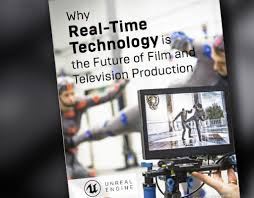Mappls : India’s Indigenous Navigation Revolution Developed by Indian Company MapmyIndia
The Future of Film and Television 2025: Trends in Streaming and Content Creation with a Thriving Era of Innovation and Storytelling”

Film and Television
The film and television industry is undergoing a massive transformation, driven by technological advancements, changing consumer behaviors, and evolving business models. The rise of streaming platforms, the increasing role of artificial intelligence (AI) in content production, and the shift towards more diverse storytelling are shaping the future of entertainment. This article explores key trends in streaming and content creation that are defining the next era of film and television.
The Dominance of Streaming Platforms
The Rise of Subscription-Based and Ad-Supported Models
Streaming platforms such as Netflix, Disney+, Amazon Prime Video, and HBO Max have revolutionized how audiences consume content. Traditional cable television has seen a steady decline as viewers opt for on-demand, ad-free experiences. However, with increased competition, many platforms are adopting hybrid models that include both subscription-based and ad-supported tiers to attract a broader audience.

The Growth of FAST Channels
Free Ad-Supported Streaming Television (FAST) channels are becoming increasingly popular. Platforms like Pluto TV, Tubi, and Roku Channel offer linear-style programming supported by advertisements, giving consumers a cable-like experience without a subscription fee. This model is gaining traction as economic uncertainty leads viewers to seek more cost-effective entertainment options.
The Role of Bundling
As the number of streaming services grows, consumers are facing “subscription fatigue.” To combat this, companies are experimenting with bundling options. Disney, for instance, offers a package that includes Disney+, Hulu, and ESPN+. This trend of consolidating multiple services into single offerings helps retain subscribers while increasing overall revenue.
Advances in Content Creation
Artificial Intelligence in Filmmaking
AI is playing a crucial role in film and television production. From scriptwriting assistance to automated editing tools, AI-powered solutions are streamlining the creative process. Platforms like OpenAI’s ChatGPT and Google’s DeepMind can help writers generate story ideas, while AI-driven software such as Runway and Synthesia can create deepfake-like visuals, reducing production costs and time.
Virtual Production Techniques
Virtual production, popularized by series like The Mandalorian, is transforming how filmmakers approach visual storytelling. By using LED walls and real-time rendering engines like Unreal Engine, creators can film scenes in virtual environments rather than relying on expensive location shoots. This technology enhances creative possibilities while improving efficiency.

The Expansion of the Metaverse and Interactive Storytelling
The concept of the metaverse is influencing content creation by blending entertainment with virtual reality (VR) and augmented reality (AR). Platforms like Meta’s Horizon Worlds and gaming ecosystems such as Fortnite and Roblox are offering new ways for audiences to engage with stories. Interactive and immersive experiences, where viewers can participate in narratives rather than just watching them, are gaining popularity.
Changing Trends in Content Consumption
The Shift Towards Short-Form Content
With the rise of platforms like TikTok, YouTube Shorts, and Instagram Reels, short-form content is dominating the entertainment landscape. Younger audiences, in particular, prefer bite-sized videos that can be consumed quickly. Even major streaming services are experimenting with shorter episode formats to cater to evolving viewer habits.
The Resurgence of Serialized Storytelling
While binge-watching remains popular, many streaming platforms are reverting to weekly episode releases to sustain audience engagement. Shows like The Last of Us and House of the Dragon benefit from prolonged discussions on social media, building anticipation and maintaining subscriptions over a longer period.

Personalization and AI-Driven Recommendations
AI-powered algorithms are refining content recommendations based on user preferences and viewing history. Services like Netflix and Amazon Prime use sophisticated data analytics to suggest content that aligns with individual tastes, enhancing the overall user experience.
The Globalization of Film and Television
The Rise of International Content
Streaming services are expanding their reach by investing in international productions. Hits like Squid Game (South Korea) and Money Heist (Spain) have proven that non-English content can achieve global success. As a result, platforms are prioritizing localized productions to appeal to diverse audiences.

Increased Investment in Regional Filmmakers
To tap into global markets, companies are funding original content from different regions. Netflix, for example, has heavily invested in African, Indian, and Latin American cinema, recognizing the demand for authentic cultural storytelling.
AI-Powered Dubbing and Subtitling
AI-driven localization tools are making foreign content more accessible to global audiences. Companies like Flawless AI use neural networks to enhance dubbing accuracy, ensuring that language barriers do not hinder content distribution.
Challenges and Ethical Considerations
Data Privacy Concerns
As streaming services collect vast amounts of user data to improve recommendations, concerns over data privacy and security have intensified. Regulations such as the General Data Protection Regulation (GDPR) in Europe are pushing companies to be more transparent about data usage.

The Debate Over AI in Creativity
While AI offers efficiency in content creation, it raises ethical questions about originality and authorship. Many in the industry fear that excessive reliance on AI-generated scripts or visuals could undermine human creativity and lead to job losses.
The Sustainability of Streaming Models
With production costs soaring, streaming platforms face challenges in maintaining profitability. Some services, like Netflix, have introduced password-sharing crackdowns and ad-supported tiers to increase revenue. The industry must find a balance between affordability and sustainability.
Conclusion
The future of film and television is being shaped by streaming innovations, AI-driven content creation, and evolving audience preferences. While technological advancements offer exciting opportunities, they also present challenges that the industry must navigate. As the landscape continues to evolve, adaptability and creativity will remain key drivers of success in the entertainment world.
ALSO READ THIS: Generational Shifts: Adapting to a New Era by Honoring the Past and Shaping the Future In 2025



